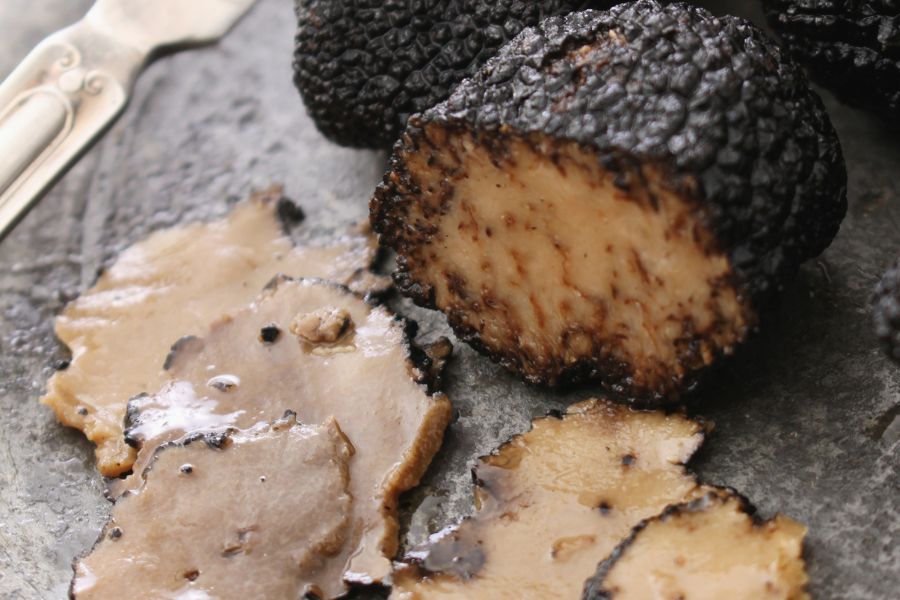Most people think truffles only grow in faraway places across the ocean. The truth is, our beautiful Maryland state has the perfect conditions for these amazing fungi to thrive.
From the rolling hills of Western Maryland to the wooded areas near the Chesapeake Bay, truffles are quietly growing in spots you probably drive past every day.
Finding truffles in Maryland takes some know-how and a lot of patience. These special mushrooms grow underground near the roots of certain trees like oaks and hickories. They’re incredibly hard to spot without the right training or equipment.
The best part about Maryland truffles is that they’re completely wild and natural. No fancy farms or special treatments needed. Mother Nature does all the work while we get to enjoy the amazing flavors these little gems bring to our kitchens.
What We Cover In This Article:
- What Wild Truffles Look Like
- Truffle Lookalikes To Avoid
- Best Practices For Finding Truffles
- Where You Can Find Truffles Around The State
- Other Great Locations For Truffles
- When The Best Time Of The Year Is To Find Truffles
- The extensive local experience and understanding of our team
- Input from multiple local foragers and foraging groups
- The accessibility of the various locations
- Safety and potential hazards when collecting
- Private and public locations
- A desire to include locations for both experienced foragers and those who are just starting out
Using these weights we think we’ve put together the best list out there for just about any forager to be successful!
A Quick Reminder
Before we get into the specifics about where and how to find these plants and mushrooms, we want to be clear that before ingesting any wild plant or mushroom, it should be identified with 100% certainty as edible by someone qualified and experienced in mushroom and plant identification, such as a professional mycologist or an expert forager. Misidentification can lead to serious illness or death.
All plants and mushrooms have the potential to cause severe adverse reactions in certain individuals, even death. If you are consuming wild foragables, it is crucial to cook them thoroughly and properly and only eat a small portion to test for personal tolerance. Some people may have allergies or sensitivities to specific mushrooms and plants, even if they are considered safe for others.
The information provided in this article is for general informational and educational purposes only. Foraging involves inherent risks.
What Wild Truffles Look Like
The U.S. is home to several native truffle species that grow wild in forests across the country. Each one has its own unique scent, appearance, and preferred habitat. Here are the types of truffles you can find:
Oregon Black Truffles (Leucangium carthusianum)
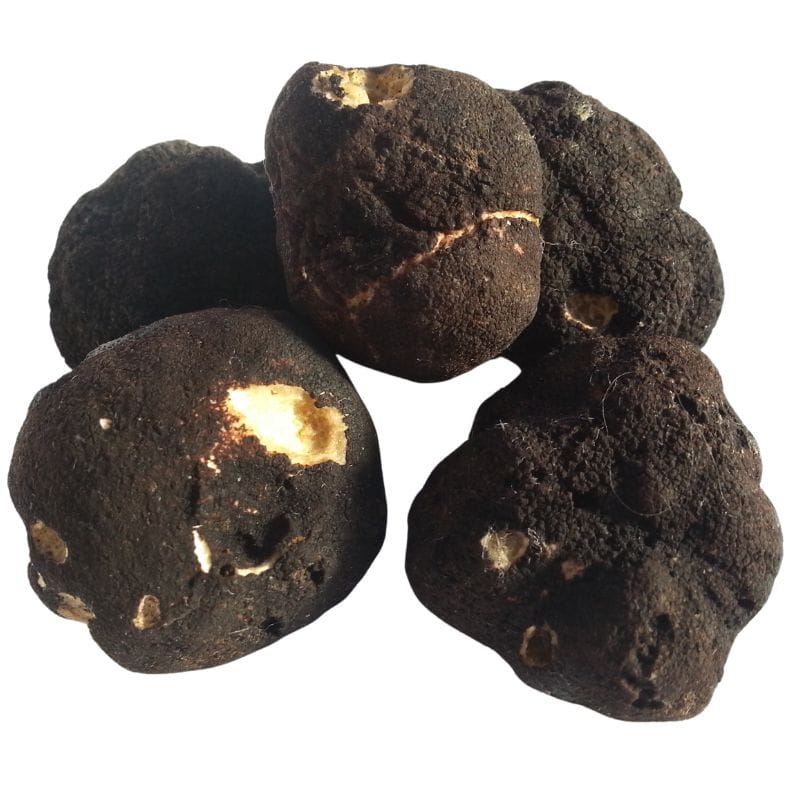
Leucangium carthusianum, also called the Oregon black truffle, grows in the Pacific Northwest and usually shows up around Douglas-fir trees. It’s a native species and one of the more well-known edible truffles from the region.
On the outside, it looks like a small lump of coal—dark black, kind of lumpy or warty, and sometimes slightly smoother in spots. They’re usually about the size of a golf ball, but they can be smaller or larger depending on the season.
Inside, the truffle is firm with a marbled pattern of gray and white veins running through it. When it’s fresh, it smells fruity, almost like pineapple, but the scent gets stronger and muskier as it ripens.
If you’re out looking for them, check in moist, shady forests with soft, loamy soil, especially where there’s a lot of moss or ferns. They grow just below the surface, so people often use trained dogs to help sniff out the ripe ones.
Compared to the Oregon white truffle, which is lighter in color and has a sharper, garlicky aroma, the black truffle has a deeper, more earthy smell. It’s also bigger and firmer than the southern U.S. truffles like Tuber lyonii, which tend to be smaller, paler, and grow around hardwoods like oaks and hickories.
Oregon Winter White Truffles (Tuber oregonense and Tuber gibbosum)
Oregon has two native white truffles that are starting to get more attention: the Oregon Winter White Truffle (Tuber oregonense) and the Oregon Spring White Truffle (Tuber gibbosum). They grow underground in forests and are prized for their strong, savory aroma.
From the outside, these truffles are small, roundish, and kind of bumpy, usually pale beige to light brown. Cut one open, and you’ll see a white interior that darkens with age, showing off a web of white veins when it’s fully mature.
The Winter White Truffle pops up from late fall into February, while the Spring White starts showing up around January and can last into June. They’re pretty similar, but the Winter variety is known for having a more powerful scent and flavor.
To find them, you’ll want to look in forests with younger Douglas-fir trees on the west side of the Cascades. Truffle hunters often check for loose soil or spots where animals have been scratching, which can be a sign there’s something below.
When fully ripe, both types give off a bold smell that’s often compared to garlic, cheese, or earthy spices. They’re usually served raw, shaved over dishes to add that truffle kick without losing any of the aroma.
Appalachian Truffle (Tuber canaliculatum)
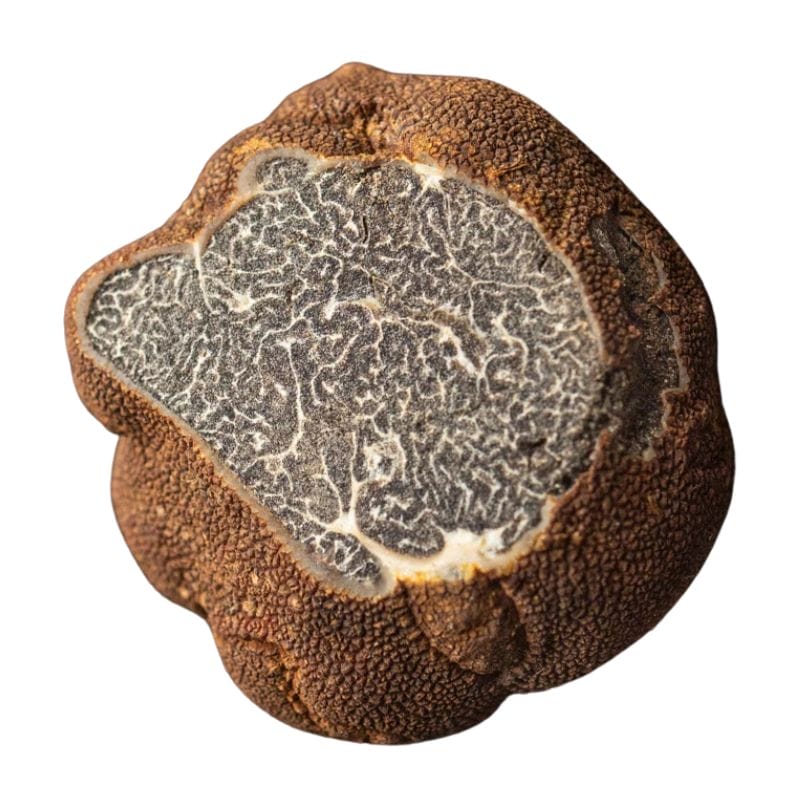
The Appalachian truffle, also known as Tuber canaliculatum, is a native North American truffle that’s slowly getting noticed. It’s about the size of a walnut and has a reddish-brown, bumpy outer surface that looks kind of like a rough, warty potato.
When you cut it open, the inside is firm and dark brown with thin white veins running through it like a marbled pattern. If it’s fully ripe, the smell is strong and earthy—some say it has a kind of nutty, funky aroma that stands out.
You can find these truffles in mixed hardwood forests, especially around oaks and pines, from late summer through fall. They grow underground, so look for spots where the soil is loose and animals like squirrels have been digging—sometimes that’s a good clue.
If you’re foraging, gently raking the top layer of soil near tree roots can help, but a trained dog or even a good nose makes it way easier. Once you know what to look for, the reddish color and bumpy skin are good signs you’ve found the right thing.
Compared to truffles like Tuber oregonense or Leucangium carthusianum, Tuber canaliculatum is more subtle in every way. Its smaller size and lighter scent mean you have to pay closer attention when foraging.
It’s also not as popular in the culinary world because it doesn’t pack the same punch in terms of flavor or aroma. Still, finding one can be rewarding, especially if you’re exploring different types of fungi in the area.
Desert Truffle (Terfezia and Tirmania spp.)
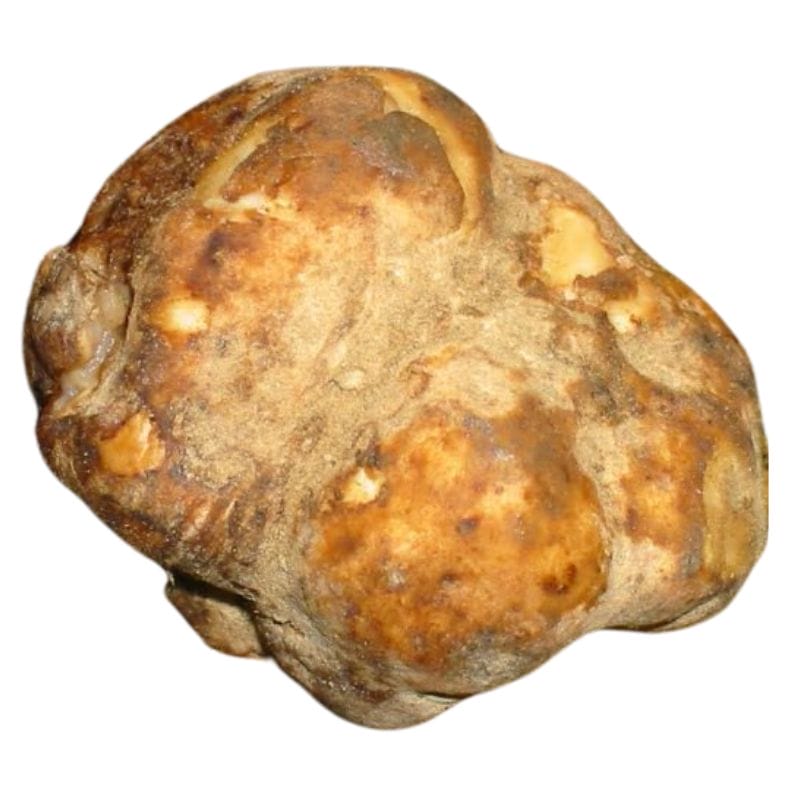
Terfezia and Tirmania are two types of truffles that are sometimes called desert truffles. These are a bit different from the truffles we usually think of, with their bold flavors and rich aromas.
These ones are a little more understated, but they’re fascinating in their own right. What makes them stand out is their ability to thrive in dry, harsh environments where you wouldn’t expect something so delicate to grow.
Unlike the earthy, intense aroma of black or white truffles, Terfezia and Tirmania truffles have a milder scent and flavor. They’re often described as nutty, with a hint of sweetness, but they lack the strong garlicky or musky notes you might associate with other truffles.
Their texture is also different—more firm and less oily than what you’d find with species like Tuber oregonense. They might not have the same culinary punch, but they’re still prized in traditional dishes, where their subtle flavors shine in simpler recipes.
When it comes to appearance, they’re easy to spot once you know what you’re looking for. They’re round to slightly irregular in shape, and their color can range from light beige to a reddish-brown, depending on the species.
The surface is usually smooth or slightly textured, without the rough, knobby look of a black truffle. Cut one open, and you’ll see a pale interior that’s often uniform in color, lacking the intricate veining you’d see in something like Leucangium carthusianum.
Pecan Truffle (Tuber lyonii)

Tuber lyonii, also known as the pecan truffle, is a native North American truffle that grows underground near the roots of pecan trees. You’ll mostly find it in the southeastern U.S., especially in states like Texas, Georgia, and Mississippi.
On the outside, pecan truffles are round to lumpy and have a smooth, light brown skin that darkens as they age. They’re usually about the size of a marble or golf ball, and sometimes they even poke up slightly through the soil surface.
If you slice one open, the inside has a pretty marbled look—light tan streaks mixed with darker brown, almost like wood grain. The smell is earthy, nutty, and kind of warm, especially when they’re fully mature.
When you’re out looking for them, check under mature pecan trees or other hardwoods like oaks and hickories. Trained dogs can help sniff them out, but people sometimes spot them by looking for little cracks in the soil or raised areas near the tree’s base.
Compared to other U.S. truffles like the Oregon white truffle or the Appalachian black truffle, pecan truffles have a milder flavor and are more common in orchards. They’re a solid option in the kitchen—freshly sliced over pasta or mixed into butter—and they don’t come with the high price tag of their European cousins.
Truffle Lookalikes To Avoid
When you’re out hunting you also need to know about a few different fungi species that look very similar to the delicious truffles we’re after but are either inedible or not worth eating. Keep an eye out for:
Pine Truffles (Geopora cooperi)
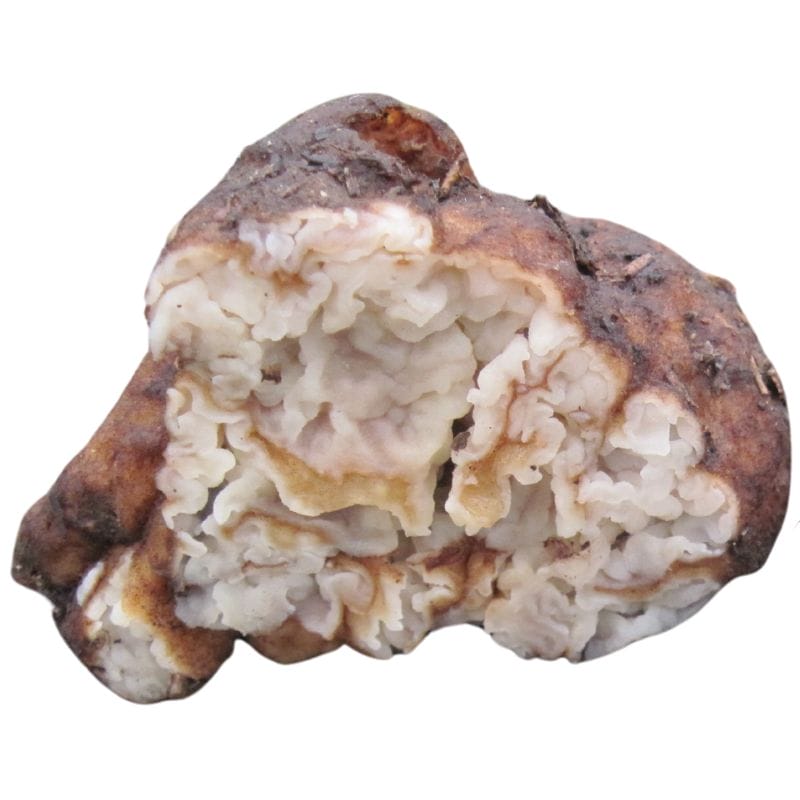
Geopora cooperi is a fungus that can easily confuse someone new to truffle hunting. It’s sometimes called the pine truffle because it grows underground like a true truffle and often pops up near certain trees.
At first glance, it might seem like you’ve hit the jackpot, but this one is a false truffle, not something you’d want to eat or sell.
The easiest way to tell Geopora cooperi apart from real truffles is by looking closely at its structure. While true truffles have a smooth or slightly knobby exterior and a marbled interior, Geopora cooperi has a rougher, more irregular outer surface.
When it matures, it sometimes splits open, revealing a cup-like shape, which true truffles never do. Inside, it’s less dense and doesn’t have the intricate veining that makes real truffles so unique.
Another big difference is the smell. True truffles have a strong, rich aroma that’s earthy, sweet, or garlicky, depending on the species. Geopora cooperi, on the other hand, has a much weaker scent, and it’s not as pleasant or distinctive.
If you’re relying on aroma to identify your find, this one will give itself away pretty quickly. So, while it might look similar at first, a closer inspection will show it’s not the culinary treasure you’re hoping for.
Stinking Slime Truffle (Melanogaster ambiguus)
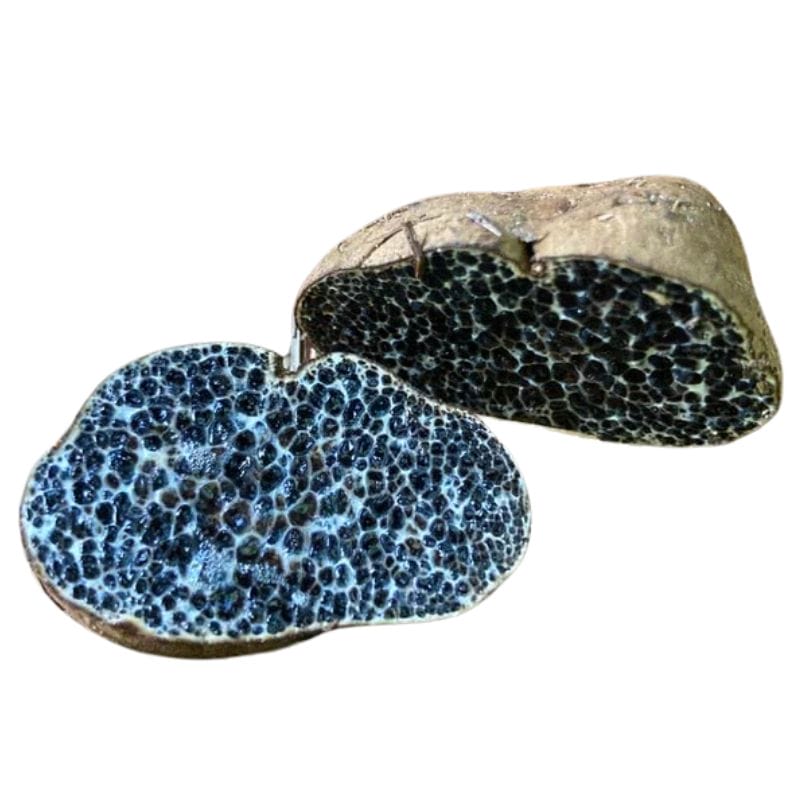
Melanogaster Ambiguus, because of their reddish-brown to dark brown exterior, might look like true truffles at first glance, but they’re quite different when you know what to look for.
The key difference is on the inside. When you cut open Melanogaster ambiguus, the interior is filled with flattened cells that have a shiny black gelatinous feel to them. Real truffles, on the other hand, have those beautiful marbled veins running through their flesh, almost like a web.
Another giveaway is the smell. While real truffles have a rich, earthy aroma that’s mouthwatering, Melanogaster ambiguus tends to have a much stronger, almost unpleasant odor—it’s not something you’d want to sprinkle on your pasta.
Earthballs (Scleroderma)
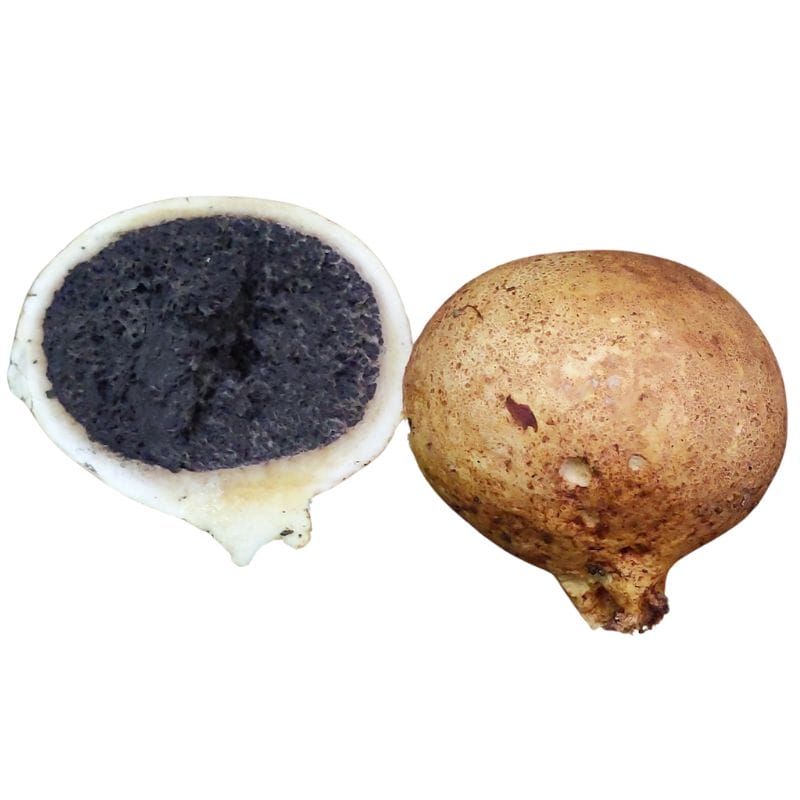
Scleroderma, commonly called earthballs, can easily fool someone who’s just starting out because they grow underground and have a round shape similar to truffles. But don’t be tricked—Scleroderma is not a true truffle, and it’s actually toxic, so it’s important to know how to tell the difference.
The first thing you’ll notice is the outer skin, which is thicker and tougher than that of most truffles. It can range in color from yellowish to dark brown, often with a rough or cracked texture.
If you cut it open, the difference becomes even clearer. While true truffles have a marbled interior with delicate white veins, Scleroderma starts out with a whitish inside that quickly darkens as it matures, turning black or purple with no marbling. It’s dense and solid, almost like charcoal in the later stages.
Another big giveaway is the smell. True truffles have a rich, earthy aroma that makes them so prized, while Scleroderma has little to no pleasant scent—some even describe it as musty or unpleasant.
Deer Truffles (Elaphomyces)
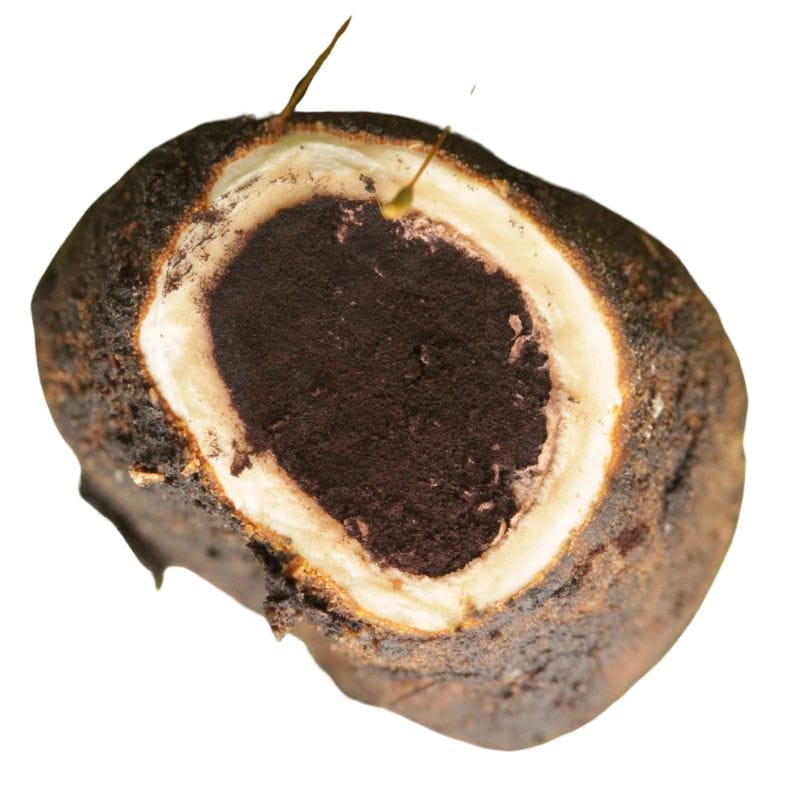
Elaphomyces, also known as deer truffles, look like true truffles at first glance, but they’re a whole different story. They’re called deer truffles because wildlife, especially deer and rodents, love to eat them. For us humans, though, they’re not edible—and definitely not what you want to mistake for a prized truffle.
Here’s how you can tell Elaphomyces apart from the real thing. First, they have a tough, warty outer surface that can range from pale tan to black, depending on the species and their age.
When you cut them open, the inside is solid and sometimes speckled or marbled, but not in the delicate, vein-like pattern you’d see in true truffles.
Their smell is also a big giveaway. Instead of the rich, earthy aroma of an edible truffle, Elaphomyces either has little scent or an odor that’s earthy but not particularly appealing.
Another thing to know is that Elaphomyces often grows deeper in the soil than true truffles, and they tend to have a harder, woodier texture.
Best Practices For Finding Truffles
Truffle hunting can be a rewarding adventure if you know the right tips and tricks. Here’s what you should keep in mind to improve your chances of finding these underground treasures:
Wait 10 to 14 Days After Heavy Rain
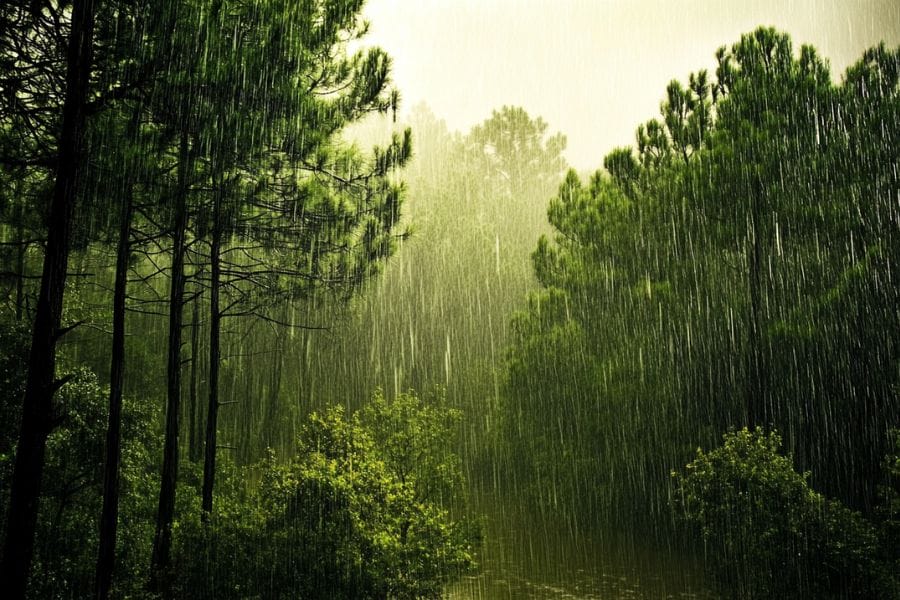
After a heavy rain, it’s best to wait about 10 to 14 days before heading out. This gives the truffles time to mature and release their signature aroma, making it easier for you (and your dog) to sniff them out. Rain helps truffles grow, but they don’t start giving off their scent right away.
As the soil warms up, the truffles get more aromatic, and the ground becomes looser, which makes digging easier without disturbing the environment too much. The timing is perfect to find truffles at their best—both in quality and in how easy they are to locate.
Find the Right Trees
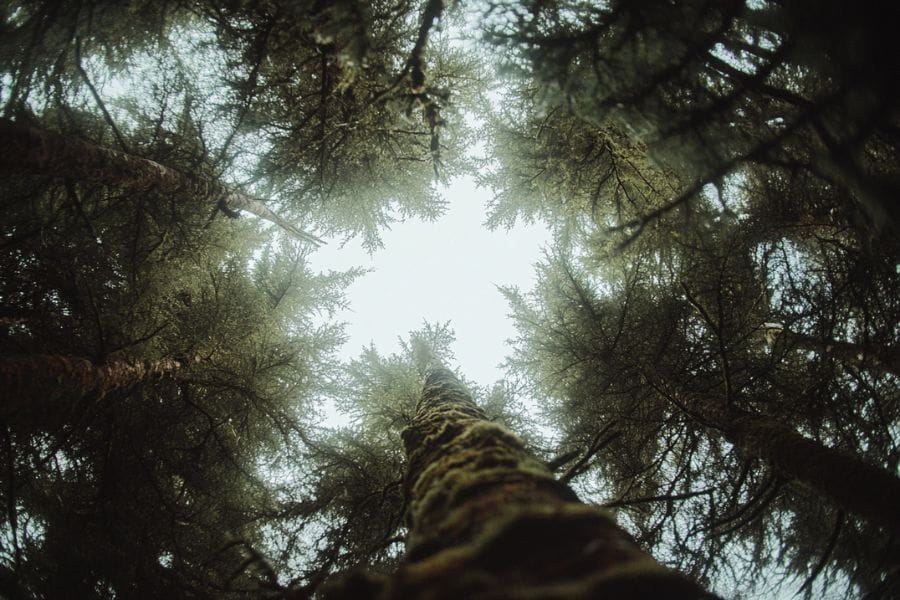
Truffles don’t grow just anywhere—they have a special relationship with certain trees. You won’t find them under just any tree, so knowing which ones to look for can make all the difference. Some of the best trees to look out for are:
- Pines
- Douglas-firs
- Oaks
- Hazelnuts
- Cypresses
- Willows
For example, if you’re looking for Oregon white truffles, keep an eye out for Douglas-fir trees. California black truffles, on the other hand, are often found near oaks and hazelnuts. The soil around these trees also needs to be slightly alkaline, so it helps to know what kind of ground you’re walking on as well.
Watch for Wildlife Activity
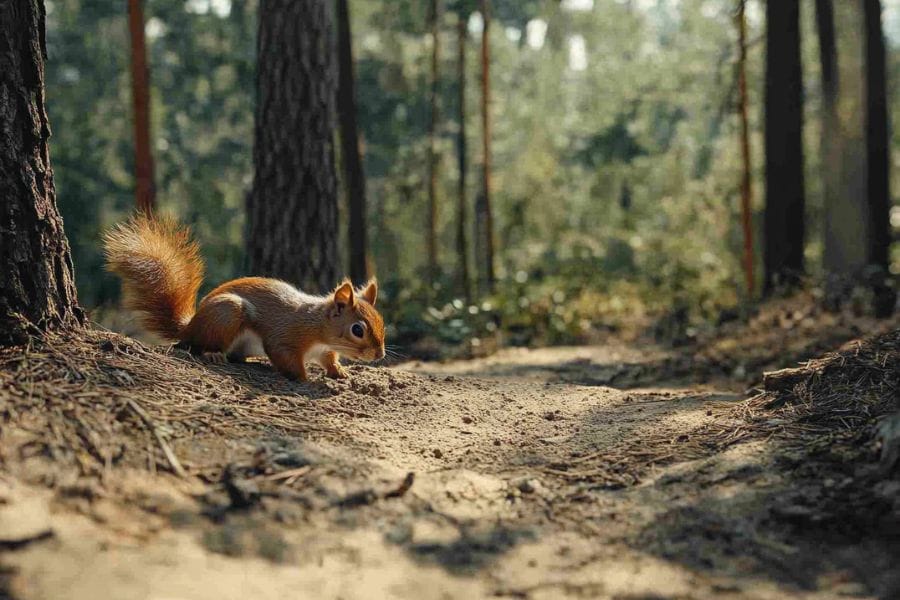
Animals like squirrels and chipmunks often help spread truffle spores, and sometimes their digging can lead you straight to truffles. While you won’t always find truffles in every pit animals dig (they also look for things like acorns or bulbs), fresh digs are a good clue. The more recent the pit, the better chance it has of leading to truffles.
Even though animals are a part of the truffle cycle, most hunters prefer using dogs to find the real treasure underground. Dogs have an incredible nose for truffles and can pinpoint their location much more reliably than any squirrel or chipmunk.
Get a Little Help from a Truffle-Hunting Dog
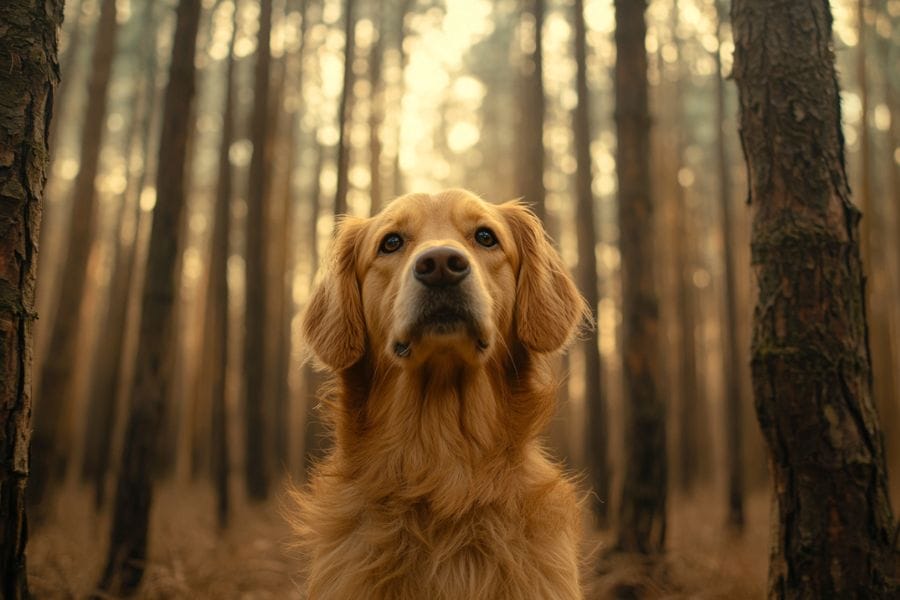
If you’re serious about truffle hunting, a trained dog can make your life a whole lot easier. Their sense of smell is extraordinary, and they’re trained to find mature truffles buried beneath the surface. Many truffle hunters swear by their dogs, and for good reason—they’re much more accurate than humans when it comes to sniffing out truffles.
If you don’t already have a trained dog, you can connect with local foraging groups or specialized trainers who offer truffle-hunting services. Some places even host events where you can see experienced handlers with their dogs in action. And if you’re feeling adventurous, you can train your own dog using truffle-scent kits and practice in a controlled space before hitting the woods.
Before you head out
Before embarking on any foraging activities, it is essential to understand and follow local laws and guidelines. Always confirm that you have permission to access any land and obtain permission from landowners if you are foraging on private property. Trespassing or foraging without permission is illegal and disrespectful.
For public lands, familiarize yourself with the foraging regulations, as some areas may restrict or prohibit the collection of mushrooms or other wild foods. These regulations and laws are frequently changing so always verify them before heading out to hunt. What we have listed below may be out of date and inaccurate as a result.
Where You Can Find Truffles Around The State
Now we’re going to go over five of the best locations for finding truffles. We’ll go a bit in-depth here and then provide a much longer list of other spots to try.
Patapsco Valley State Park
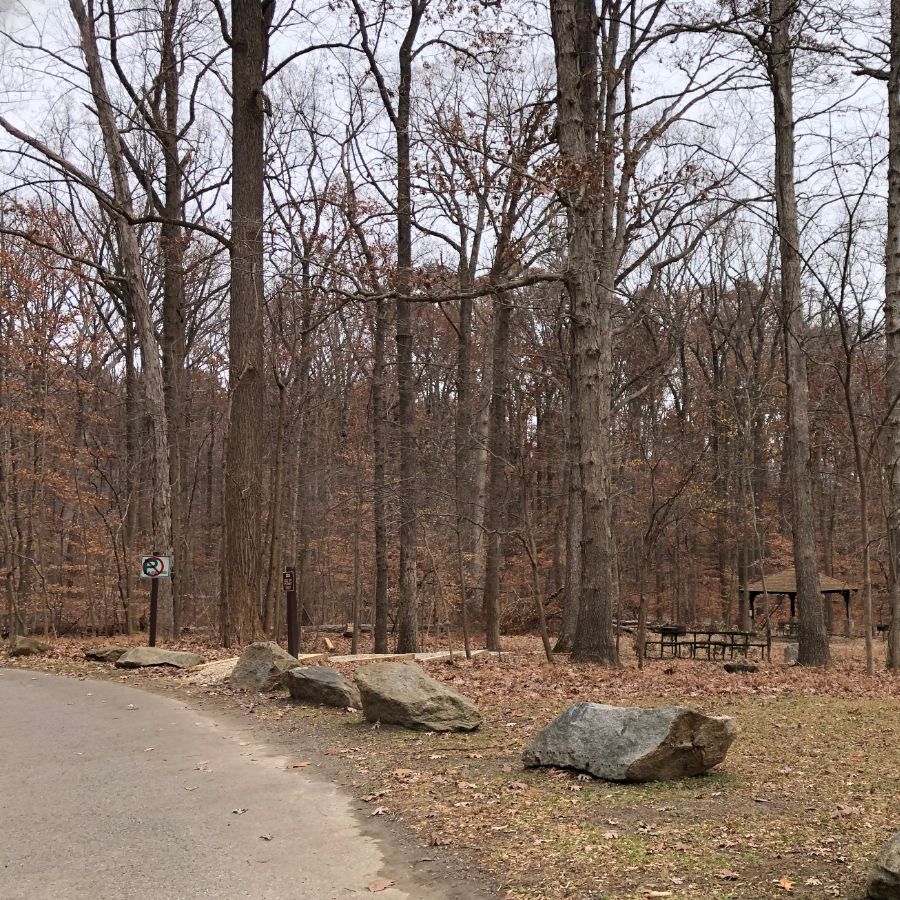
Patapsco Valley State Park covers over 16,000 acres along the Patapsco River in central Maryland. This huge park has rolling hills, thick forests, and winding streams that create perfect conditions for truffle hunting. The diverse terrain gives you many different areas to explore.
The oak and hickory forests are your best bet for finding truffles since these trees form partnerships with truffle fungi underground. Look around the base of old oak trees where the soil looks slightly raised or disturbed.
The park also has rocky limestone areas that create the alkaline soil truffles prefer. Stream valleys throughout the park stay moist and collect organic matter, making them another productive spot to search for these hidden treasures.
Cunningham Falls State Park
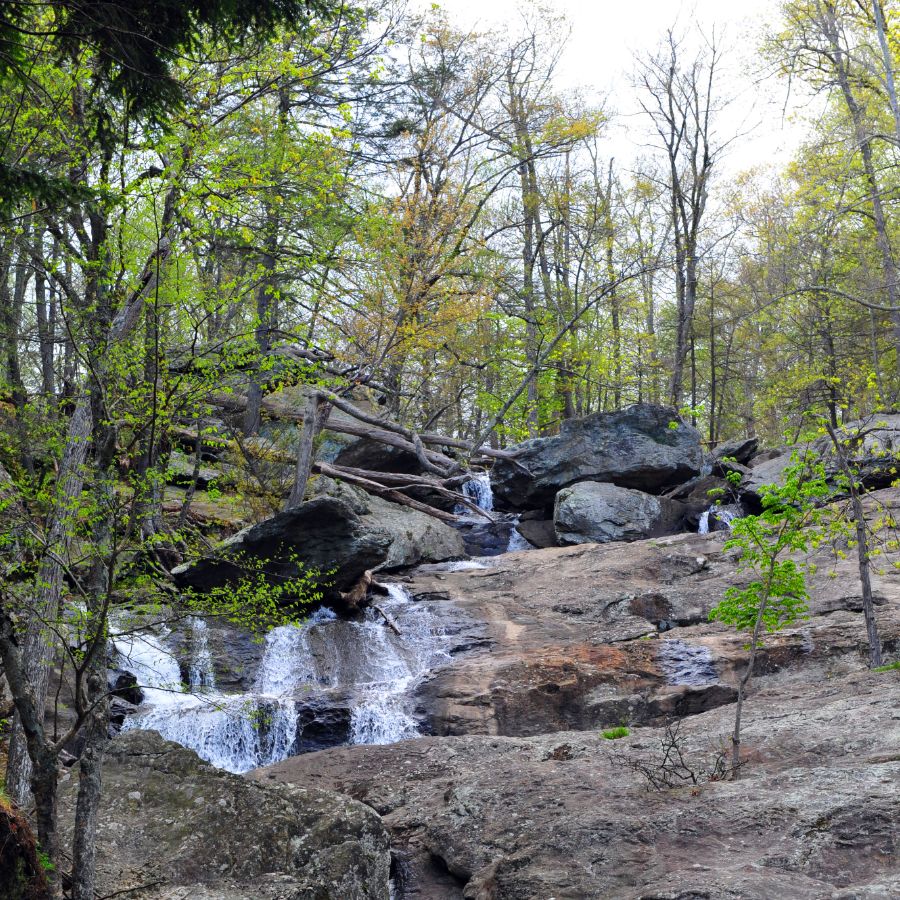
The scenic Cunningham Falls State Park sits in Maryland’s Catoctin Mountains and offers excellent truffle hunting opportunities. The mountain environment creates cooler temperatures and consistent moisture that truffles need to develop properly. This park’s varied elevation gives you access to different forest types in one location.
American beech trees with their distinctive smooth gray bark are particularly good for truffle hunting here. Search carefully around these trees where fallen leaves have decomposed into rich, dark soil.
The park’s thick mountain laurel and rhododendron groves also create ideal microclimates with steady humidity levels. These evergreen shrub areas maintain the consistent conditions that allow truffle colonies to thrive year after year.
Susquehanna State Park
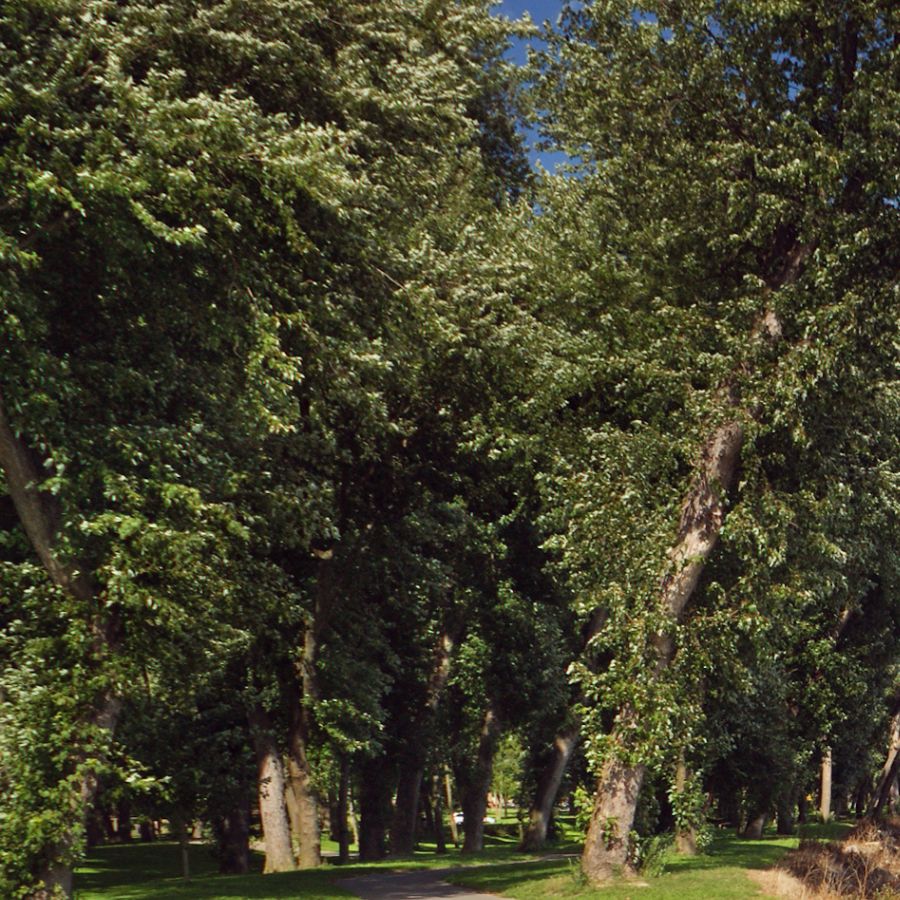
Susquehanna State Park protects the final miles of the Susquehanna River before it joins Chesapeake Bay. The river’s influence creates rich bottomland soils that are perfect for supporting truffle communities. This unique riverside location offers habitat types you won’t find in Maryland’s mountain parks.
The massive tulip poplar and sycamore trees growing along the river have extensive root networks that can support large truffle colonies. Focus your search between these forest giants where their root systems overlap and compete for nutrients.
The park’s old agricultural fields are slowly returning to forest, creating transition zones with varied soil chemistry. These edge areas where meadows meet woodlands often produce the most consistent truffle finds.
Seneca Creek State Park
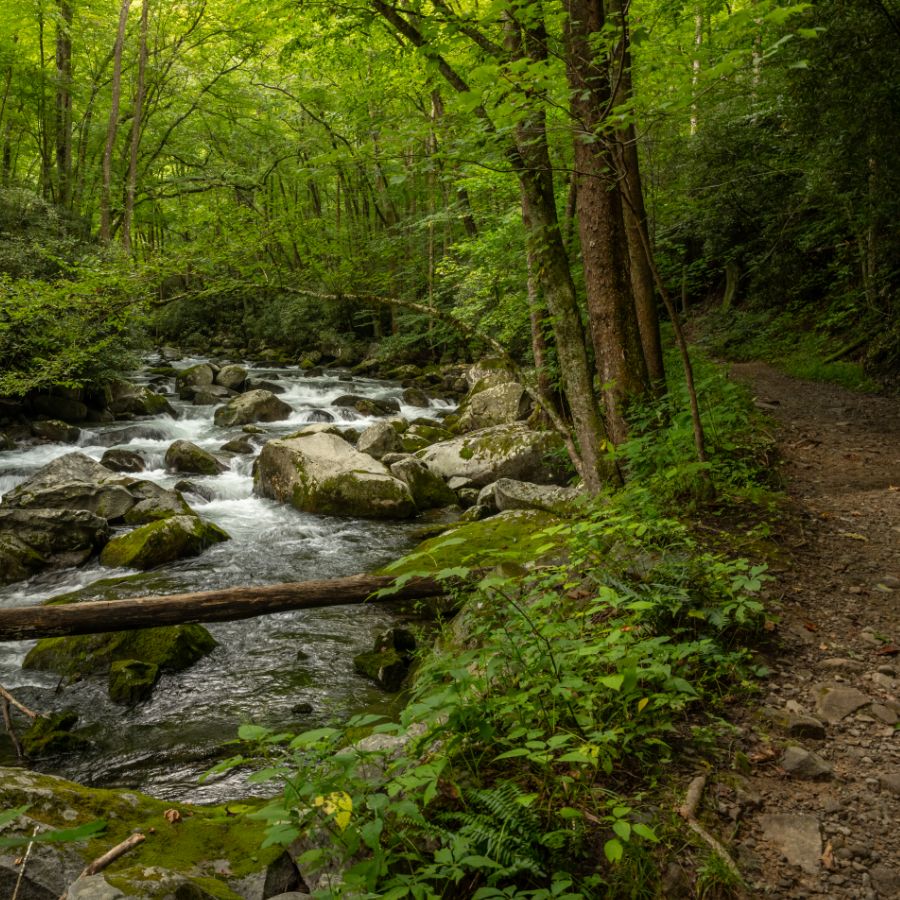
Seneca Creek State Park encompasses nearly 6,300 acres of rolling piedmont landscape in Montgomery County. The creek system running through the park creates a network of moist bottomlands surrounded by drier upland forests. This combination of wet and dry areas gives truffles different growing conditions to choose from.
The tall tulip poplar groves along creek bottoms have the alkaline soils and excellent drainage that truffles love most. Search on north-facing slopes where moisture lingers longer but water doesn’t stand in puddles.
The park’s old-growth forest patches have had centuries to develop the complex underground fungal networks that support truffle communities. Even the maintained areas near the disc golf course can be productive since the mowed grass makes it easier to spot signs of truffle activity.
Green Ridge State Forest
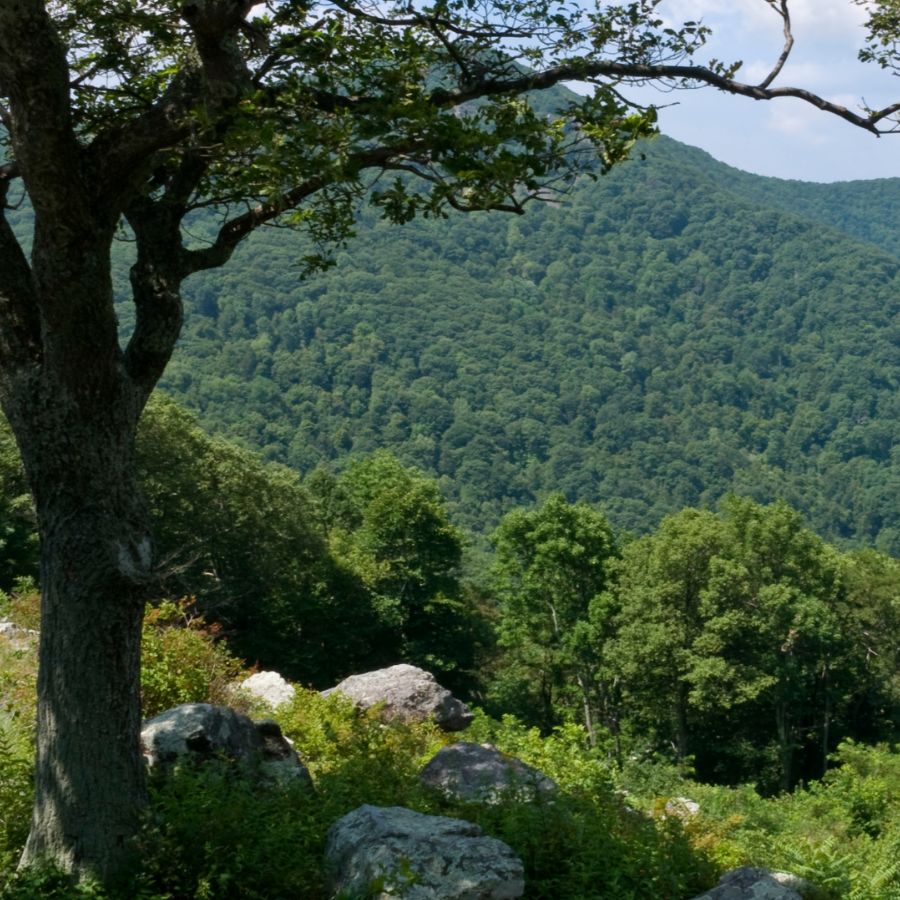
Green Ridge State Forest spans over 44,000 acres of mountainous terrain in western Maryland. This remote wilderness area has remained largely undisturbed for decades, allowing complex soil ecosystems to develop naturally. The forest’s size means you can find truffle habitat that hasn’t been picked over by other hunters.
The chestnut oak forests on dry mountain ridges create unique growing conditions with rocky, well-drained soils that some truffle species prefer. Look among granite boulders where pockets of deeper soil have accumulated over thousands of years.
The forest’s deep mountain hollows stay consistently cool and moist throughout the growing season. These protected valleys often contain the most productive truffle beds since they maintain optimal conditions even during dry spells.
Other Great Locations For Truffles
Central Maryland
| Location | Collection Guidelines |
|---|---|
| Cromwell Valley Park | Foraging is allowed for personal use; avoid disturbing plant roots. |
| Gunpowder Falls State Park | Permitted for personal consumption; stay on designated trails. |
| Liberty Reservoir | Collection allowed; do not damage surrounding vegetation. |
| Loch Raven Reservoir | Personal foraging permitted; limit collection to small quantities. |
| Oregon Ridge Park | Foraging allowed; refrain from removing entire plants. |
| Patapsco Valley State Park | Truffle foraging is permitted for personal use; avoid removing entire plant material. |
| Prettyboy Reservoir | Collection allowed; adhere to park guidelines on sustainable foraging. |
| Soldiers Delight Natural Environment Area | Foraging permitted; be cautious of rare plant species in the area. |
Eastern Shore
| Location | Collection Guidelines |
|---|---|
| Adkins Arboretum | Foraging allowed with permission; focus on fallen truffles only. |
| Blackwater National Wildlife Refuge | Personal collection permitted; avoid sensitive habitats. |
| Chincoteague National Wildlife Refuge | Foraging allowed; stay on established paths to minimize impact. |
| Elk Neck State Forest | Collection permitted; limit to non-commercial quantities. |
| Idylwild Wildlife Management Area | Foraging allowed; do not disturb wildlife or nesting areas. |
| Martinak State Park | Personal use foraging permitted; collect only what you can use. |
| Pocomoke River State Forest | Foraging allowed; avoid wetland areas to protect ecosystems. |
| Sassafras Natural Resources Management Area | Collection permitted; follow guidelines to preserve native species. |
| Tuckahoe State Park | Foraging allowed; ensure minimal disturbance to the environment. |
| Wye Island Natural Resources Management Area | Personal collection permitted; respect conservation efforts in place. |
Southern Maryland
| Location | Collection Guidelines |
|---|---|
| Cedarville State Forest | Foraging permitted; avoid collecting near rare plant habitats. |
| Chapman State Park | Personal use collection allowed; stay on marked trails. |
| Myrtle Grove Wildlife Management Area | Foraging allowed; limit collection to avoid overharvesting. |
| Nanjemoy Wildlife Management Area | Collection permitted; be mindful of protected species in the area. |
| Purse State Park | Foraging allowed; adhere to park rules regarding plant conservation. |
| Smallwood State Park | Personal collection permitted; avoid disturbing soil structure. |
| St. Mary’s River State Park | Foraging allowed; collect only mature specimens to allow regrowth. |
Western Maryland
| Location | Collection Guidelines |
|---|---|
| Big Run State Park | Foraging permitted; avoid areas with dense undergrowth. |
| Casselman River Bridge State Park | Collection allowed; respect historical sites within the park. |
| Cunningham Falls State Park | Personal use foraging permitted; stay clear of protected zones. |
| Dans Mountain State Park | Foraging allowed; limit collection to avoid ecosystem disruption. |
| Deep Creek Lake State Park | Collection permitted; avoid shoreline areas to protect habitats. |
| Fort Frederick State Park | Foraging allowed; be aware of ongoing conservation projects. |
| Gambrill State Park | Personal collection permitted; stay on designated trails. |
| Green Ridge State Forest | Foraging allowed; follow sustainable harvesting practices. |
| Herrington Manor State Park | Collection permitted; avoid wetland areas to protect biodiversity. |
| New Germany State Park | Foraging allowed; collect only what is needed for personal use. |
| Rocky Gap State Park | Personal use foraging permitted; adhere to park conservation guidelines. |
| Savage River State Forest | Foraging allowed; be cautious of sensitive plant species. |
| South Mountain State Park | Collection permitted; avoid steep slopes to prevent erosion. |
| Swallow Falls State Park | Foraging allowed; stay on established paths to minimize impact. |
| Wolf Den Run State Park | Personal collection permitted; respect ongoing habitat restoration efforts. |
When The Best Time Of The Year Is To Find Truffles
The best time to hunt for truffles in Maryland is during fall and early winter, typically from October through December. Cool temperatures and steady rainfall during these months create perfect conditions for truffle development underground.
Spring can also be productive, especially from March to May when the ground thaws and moisture levels rise again.
Avoid searching during summer months when hot, dry weather makes truffles harder to find. Winter hunting works best after mild periods when the ground isn’t frozen solid.
Plan your trips for 24 to 48 hours after steady rain, as moisture helps release the strong earthy scents that make truffles easier to locate in the forest soil.
One Final Disclaimer
The information provided in this article is for general informational and educational purposes only. Foraging for wild plants and mushrooms involves inherent risks. Some wild plants and mushrooms are toxic and can be easily mistaken for edible varieties.
Before ingesting anything, it should be identified with 100% certainty as edible by someone qualified and experienced in mushroom and plant identification, such as a professional mycologist or an expert forager. Misidentification can lead to serious illness or death.
All mushrooms and plants have the potential to cause severe adverse reactions in certain individuals, even death. If you are consuming foraged items, it is crucial to cook them thoroughly and properly and only eat a small portion to test for personal tolerance. Some people may have allergies or sensitivities to specific mushrooms and plants, even if they are considered safe for others.
Foraged items should always be fully cooked with proper instructions to ensure they are safe to eat. Many wild mushrooms and plants contain toxins and compounds that can be harmful if ingested.

